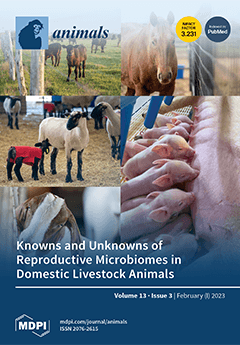The use of insect products in aquatic feed is the focus of the aquaculture industry. Black soldier fly larvae oil (BSFLO) has been examined as a potential lipid source for diets for some fish species, but its utilization on
Onychostoma macrolepis has not been explored. The influences of substituting fish oil (FO) with BSFLO in the diet on growth, biological indicators, approximate composition, serum biochemistry, antioxidant capacity and expression of lipid metabolism genes in juvenile
O. macrolepis were investigated in an eight-week feeding experiment. Four experimental diets were prepared by replacing 0 (control), 25% (BSFLO-25), 50% (BSFLO-50) and 100% (BSFLO-100) FO with BSFLO, and then randomly assigned to twelve aquariums with ten fish (1.75 ± 0.05 g) in each aquarium. The findings showed that the growth indicators, body composition and serum biochemistry in the BSFLO-25 and BSFLO-50 groups had no statistical differences from those of the control group. The activities of superoxide dismutase (SOD) (91.22–94.96 U/mgprot) and the contents of malondialdehyde (MDA) (1.12–1.16 nmol/mgprot) in the liver appeared to be significantly the highest and the lowest in the BSFLO-25, BSFLO-50 and BSFLO-100 groups (
p < 0.05). The adipocyte size and intraperitoneal fat index value of fish fed on the BSFLO-100 diet were significantly decreased compared to the control group (
p < 0.05). The expression levels of lipid catabolism genes pparα, (peroxisome proliferators-activated receptor alpha) and cpt1a (carnitine palmitoyltransferase 1 isoform a) in the BSFLO-100 group were significantly higher than those of the control group (
p < 0.05). The above results indicated that it was feasible to replace 25–50% dietary FO with BSFLO in juvenile
O. macrolepis. Dietary BSFLO supplementation could enhance the antioxidant capacity of the liver and suppress intraperitoneal fat accumulation in
O. macrolepis. The use of other insect oils in the diets of this species will be evaluated in future research.
Full article






